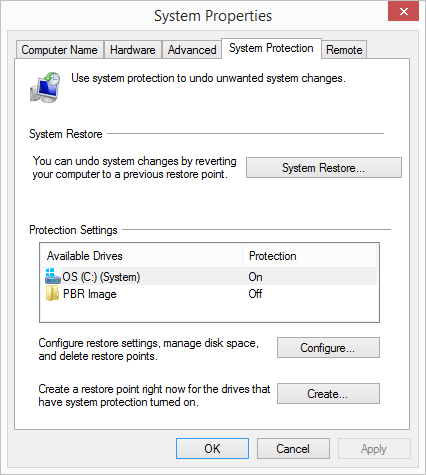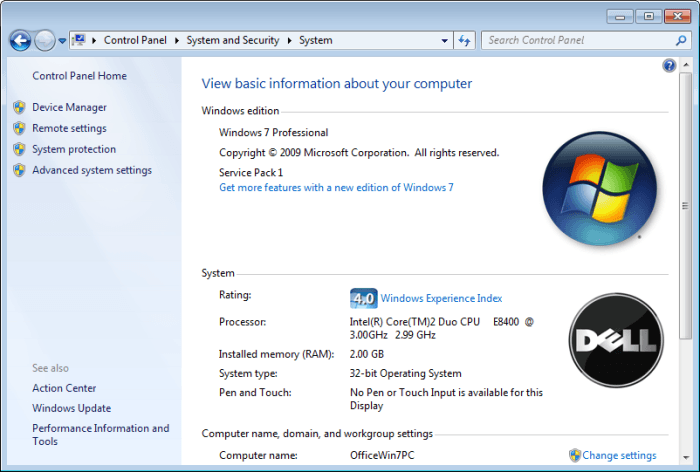Restoring Your System from a Restore Point
Sometimes, installing software or device drivers has an adverse impact on your system. Setting a Restore Point prior to an installation allows you to reset your system to its previous state in case you discover that installing the new software wasn't such a good idea. (How to set a Restore Point is covered in another tip.) Assuming you had set a Restore Point, you can revert your system back to its previous condition by doing a system restore.
To do a system restore follow these steps if you are using Windows 8:
- Move the mouse pointer into the very bottom-left corner of the screen and right-click. You should see a Context menu appear.
- Choose the System option. Windows displays the System area of the Control Panel. (See Figure 1.)

Figure 1. The System dialog box.
- Click the System Protection link at the left of the dialog box. Windows displays the System Protection tab of the System Properties dialog box. (See Figure 2.)

Figure 2. The System Protection tab of the System Properties dialog box.
- Click the System Restore button. You will then be taken through a wizard that allows you to select what Restore Point you wish to use and then perform the restore.
If you are using Windows 7 the steps are a bit different. (The biggest difference is how you get to the first dialog box.). Follow these steps:
- Click Start, right-click Computer, and select Properties from the resulting Context menu. Windows displays the System area of the Control Panel. (See Figure 3.)

Figure 3. The System dialog box.
- Click the System Protection link at the left of the dialog box. Windows displays the System Protection tab of the System Properties dialog box. (See Figure 4.)

Figure 4. The System Protection tab of the System Properties dialog box.
- Click the System Restore button. You will then be taken through a wizard that allows you to select what Restore Point you wish to use and then perform the restore.

 This tip (12212) applies to Windows 7 and 8.
This tip (12212) applies to Windows 7 and 8.
Author Bio
Barry Dysert
Barry has been a computer professional for over 35 years, working in different positions such as technical team leader, project manager, and software developer. He is currently a software engineer with an emphasis on developing custom applications under Microsoft Windows. When not working with Windows or writing Tips, Barry is an amateur writer. His first non-fiction book is titled "A Chronological Commentary of Revelation." Learn more about Barry...
Stopping or Deleting a Print Job
Knowing how to stop or delete a print job can save lots of paper and also lots of embarrassment if you happen to ...
Discover More
Creating a Disk Partition
Partitioning your disk offers a quick and efficient means to make good use of your disk resources. By creating disk ...
Discover More
Changing the Size of the Taskbar
The Taskbar is the "heart" of managing your work in Windows. Fortunately, it can be sized to your heart's content. This ...
Discover More
Starting Programs Automatically at Startup
If you have programs that you want to automatically start when your system starts, this tip tells you how to set them up.
Discover More
Understanding Notifications in the Windows 10 Action Center
The Action Center is essentially the old Notification Area. This tip helps you understand it.
Discover More
Clipboard History
Windows has had cut and paste functionality for years. Windows 10 improves the Clipboard functionality by including a new ...
Discover More




![]()
![]() This tip (12212) applies to Windows 7 and 8.
This tip (12212) applies to Windows 7 and 8.
Comments